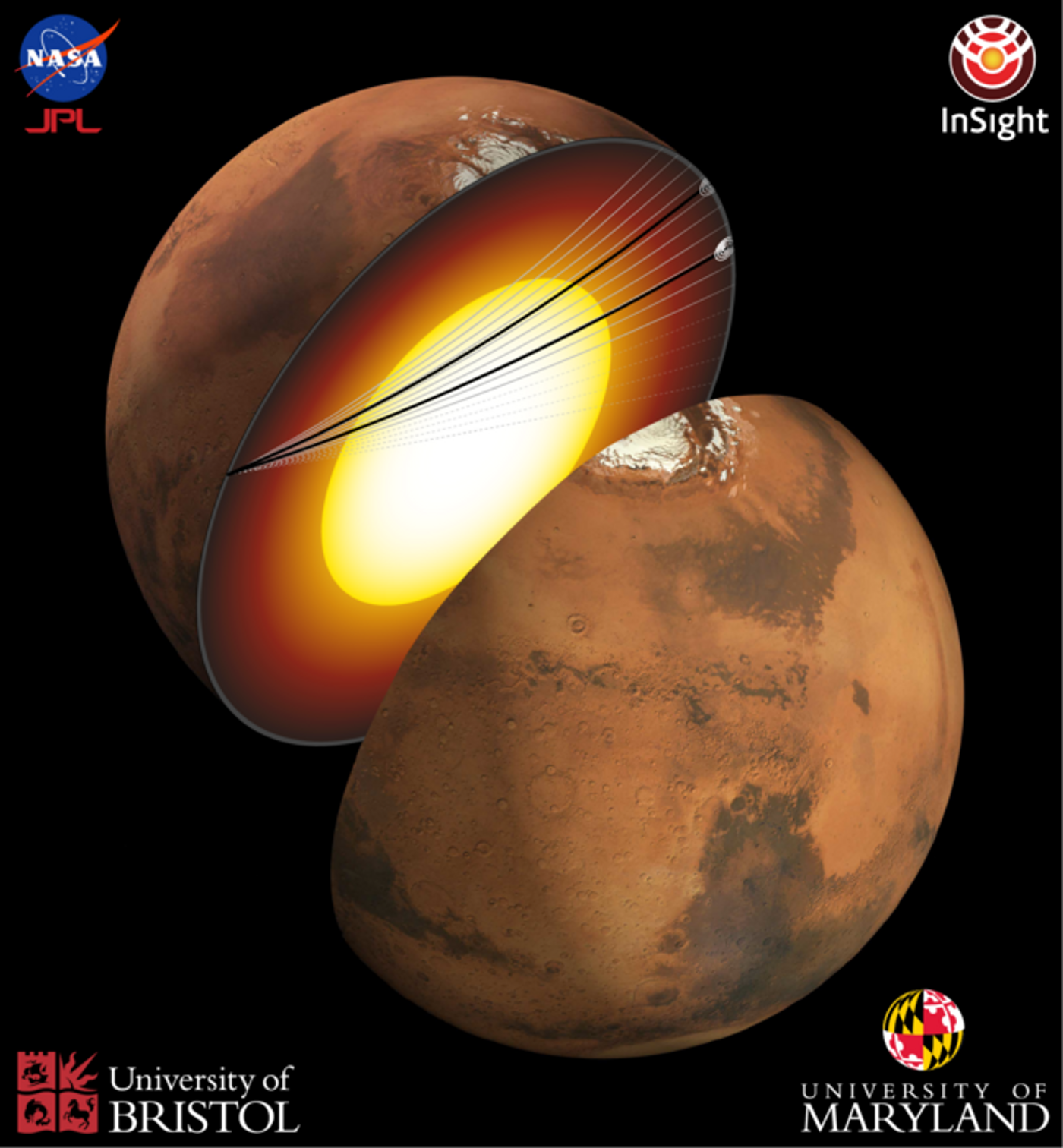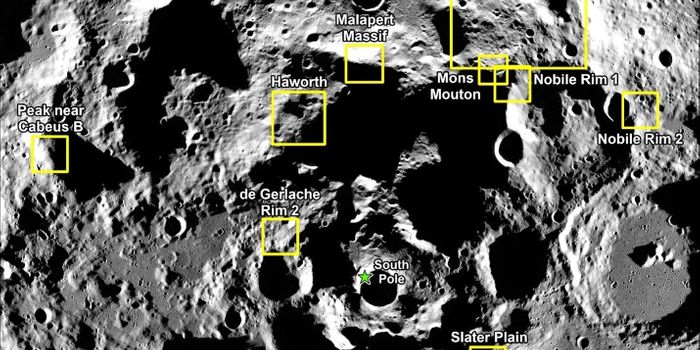Martian Seismic Waves Observed in Historic First
It turns out that the interior of Mars exhibits seismic waves just like the Earth, according to a new study published in the Proceedings of the National Academy of Sciences. Using seismic data collected by NASA’s InSight lander, the researchers were not only able to take direct measurements of the Martian core but also confirmed the Martian core is entirely comprised of liquid iron-alloy with large amounts of oxygen and sulfur, as well. This in stark contrast to the Earth, which has a solid inner core and a liquid outer core and holds the potential to help scientists better understand the geological differences between Earth and Mars along with the formation and evolution of the Red Planet.
Artist’s rendition of seismic wave paths traveling through the Martian core. (Credit: NASA/JPL and Nicholas Schmerr)
“In 1906, scientists first discovered the Earth’s core by observing how seismic waves from earthquakes were affected by traveling through it,” said Dr. Vedran Lekic, who is an associate professor of geology at the University of Maryland (UMD), and a co-author on the study. “More than a hundred years later, we’re applying our knowledge of seismic waves to Mars. With InSight, we’re finally discovering what’s at the center of Mars and what makes Mars so similar yet distinct from Earth.”
For the study, the researchers examined the timing of seismic waves traveling through the interior of Mars from two different seismic events on Mars, one of a marsquake origin and the other from a large impact. They then used data from other Martian seismic and geophysical events to determine the core of Mars is entirely liquid.
The researchers also determined that the density of the Martian core is far less than of the Earth's, meaning the two planets had two completely different formation paths. They came to this conclusion by examining the chemical composition of Mars’ core, specifically the light elements like oxygen and sulfur, which the researchers identified were present in much larger amounts than on Earth.
The large amounts of lighter elements could help explain why Mars currently does not possess a magnetic field, which is also in stark contrast to the Earth. The magnetic field helps shield the Earth from harmful solar radiation and allowing our planet to be far more habitable than Mars, which is inhospitable to life, said Dr. Nicholas Schmerr, who is an associate professor of geology at UMD, and a co-author on the study.
“Even though the InSight mission ended in December 2022 after four years of seismic monitoring, we're still analyzing the data that was collected,” said Dr. Lekic. “InSight will continue to influence how we understand the formation and evolution of Mars and other planets for years to come.”
What new discoveries will scientists make about Mars and its seismic activity in the coming years and decades? Only time will tell, and this is why we science!
Sources: Proceedings of the National Academy of Sciences, University of Maryland
As always, keep doing science & keep looking up!









